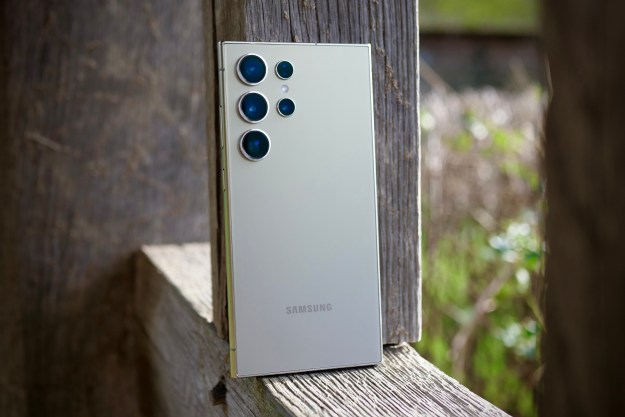Peak Design is one of my favorite companies. It started with a Capture Clip for my camera before growing to other random photography accessories, and now I use its Everyday Backpack as my, well, everyday backpack.
The San Francisco-based company has a well-earned reputation for making exceptionally good photography gear, and now it’s taking that expertise into an altogether new game: Smartphones. Simply known as Mobile by Peak Design, this is a system for accessories that strives to enhance the smartphone experience with hot-swappable magnetic mounts.
The first round feature a $40 smartphone case (for the iPhone 11, iPhone 12, and Galaxy S20 series), a $20 universal adapter for any phone, and a series of mounts at various price points: For a bicycle, motorcycle, camera rig, car, wireless charger, or wall, plus mini tripod and wallet/kickstand attachments.

You know it’s attached
Peak Design launched the Mobile system with a Kickstarter campaign, which is slightly odd given it’s already a successful company. And I simply don’t report on Kickstarter campaigns — I wait for the products to exist. But nonetheless, it has already ended. An extremely modest goal of $100,000 was crushed, with over $1.8 million raised. And PD was nice enough to send me an early kit to try out.
The core of the system is the “Everyday Case,” which has the same superb design and style I’ve come to expect from Peak Design. It’s thin but tough, and has a nice textured body. But I didn’t use it, because at the moment PD only had the iPhone 11 Pro case available, and I have a 12 Pro. But here’s the beauty part: There’s a universal adapter that is simply the meat and potatoes of the Mobile system, backed by a hefty swath of 3M adhesive, that you can stick on any glass-backed phone — or for most people, a case of their own.
With either the case or universal adapter, you can toss any of the aforementioned mounts on and have it snap into place with the force of strong magnets — guided nicely by a raised square that mates with the corresponding hole on the base. The attachment design and force leaves no ambiguity: You know, immediately, that it’s attached. And with that peace of mind, it’s amazing how much you’ll find yourself using these mounts.
The design is perfect for usability and stability.
The tripod is wonderful. It folds down flat so it’s nearly invisible in your hand and pocket, yet lets you deploy a stand for a time lapse, selfie, or stable video shot at any time. That square mount and sturdy legs let you get a rock-solid shooting position, too. And you can also keep the legs tucked in and just prop the phone up on a table for a video call or to cross-reference something on the screen next to your laptop. It’s a brilliant piece of engineering.
The most interesting piece may be the simplest: The wall mount. It’s just a fabric square you can stick anywhere. Put it on a kitchen wall to reference a recipe or read messages, or perhaps put it next to your workout equipment or desk. It looks great when it’s not in use, and you’d be surprised how often you rely on it once it’s just there waiting for you. (And as a bonus, you can stick the phone directly onto a refrigerator or any piece of steel furniture.)
All of these soft mounts stick to their respective surfaces with the same insanely sticky 3M adhesive as the universal mount uses for the phone. There’s really no better solution for this sort of thing — and as long as it’s applied properly, it’ll hang on tight for a very long time.
Slick and simple
For more intense applications, some mounts fall into the “hard mount” category, which pair the magnet hold with a physical clip-in so you know the phone won’t budge. That’s found in the bicycle, motorcycle, and creator mounts. It’s astonishing how slick and simple these hard mounts are, when you compare them to the usual long-arm ratcheting contraptions for bicycle and motorcycle mounts.
Peak Design obviously started working on Mobile well before Apple announced the iPhone 12 with MagSafe, but still has to field the question. It’s put it simply: “We are confident that our SlimLink connection system will have a high degree of compatibility with Apple’s [MagSafe]. But, we’re actively working on the design updates and validation testing to achieve this integration.” This initial run of preproduction samples I have here isn’t compatible with MagSafe, but I can easily see how it could be.
Peak Design’s doing MagSafe better than Apple is.
The magnets in the mounts are incredibly strong, and the only issue is their placement. If the layout was changed, or an extra ring of magnets was added, at least the “soft” accessories that don’t have a clip-in could easily support both PD’s own layout and Apple’s. And for what it’s worth, the MagSafe charger already works perfectly fine through the universal adapter.
We’ve all been waffling about where MagSafe is headed on the iPhone 12, and using Mobile by Peak Design has me dying for MagSafe compatibility. This is the sort of system that I would’ve loved to see Apple launch on its own from Day 1. And since it didn’t, and likely has no plans of the sort, I can’t wait for Peak Design to get this out in the world.
As it stands, it’s an excellent phone accessory system for iPhones and Androids — and with MagSafe compatibility, it’ll be even better.
Editors' Recommendations
- 5 phones you should buy instead of the iPhone 15
- This is our best look yet at the iPhone 16’s big design changes
- 5 phones you should buy instead of the iPhone 15 Pro
- Why I ditched my iPhone 15 Pro for the Samsung Galaxy S24 Ultra
- The OnePlus 12 has one big advantage over Samsung and Apple












